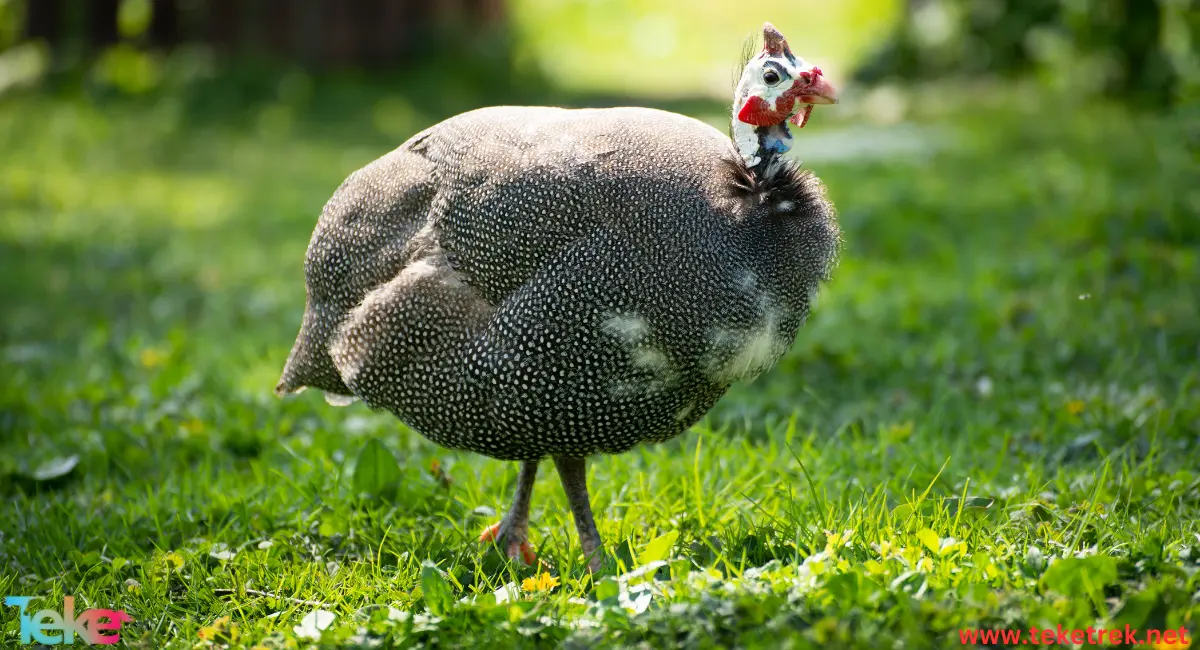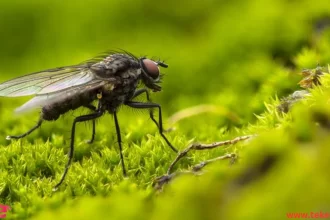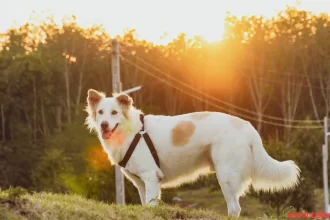The Turkey bird is one of the unique animals, raised for its meat and eggs. It is characterized by a massive body and colorful feathers with bright colors, and the males are distinguished by the presence of a crown on their heads. The large and stunning turkeys have increasingly become a common sight around the world. Below we talk more about the turkey on TekeTrek website, where they are found, and the most important facts about their life.
Introduction paragraph about Turkey bird
- The Turkey bird is a large bird from the genus Meleagris, native to North America, and is among the largest birds in its ranges. There are two types: the wild turkey (Meleagris gallopavo) found in eastern and central North America, and the ocellated turkey (Meleagris ocellata) found in the Yucatan Peninsula in Mexico.
- As with many large ground-feeding birds (order Galliformes), the male is larger in size and more colorful than the female.
Evolution of Turkeys
- The first turkeys evolved in North America over 20 million years ago, and the wild turkey is one of the two domesticated birds living in the New World. In the early 16th century, European explorers brought wild turkeys to their homeland from Mexico, where the indigenous people had domesticated the birds for centuries. The turkey quickly became popular on European menus due to its large size and rich taste from its diet of wild nuts. When English settlers arrived on the Atlantic coast, they brought domesticated turkeys with them.
- The popularity of the wild turkey led to a sharp decline in its numbers, but it has recovered and now occurs in every state except Alaska.
Habitats of Wild Turkeys
- Flocks of wild turkey’s roam around forests and green spaces, where male suitors puff themselves up in feathered displays.
- Wild turkeys wake up early in the morning, foraging for food in green spaces, field edges, and along roadsides. They particularly favor forest edges with oak and walnut trees.
- During spring and summer, males emit distinctive, high-pitched calls and cover significant distances. You might find wild turkeys on the ground, but don’t be surprised if you encounter a group of them soaring high to their roosts at day’s end.
- If you have a large area near the forest, you can attract wild turkeys by planting walnut or blackberry trees. Some people also lure them by scattering birdseed or corn in their fields. However, be cautious about attracting unwanted visitors like rodents.

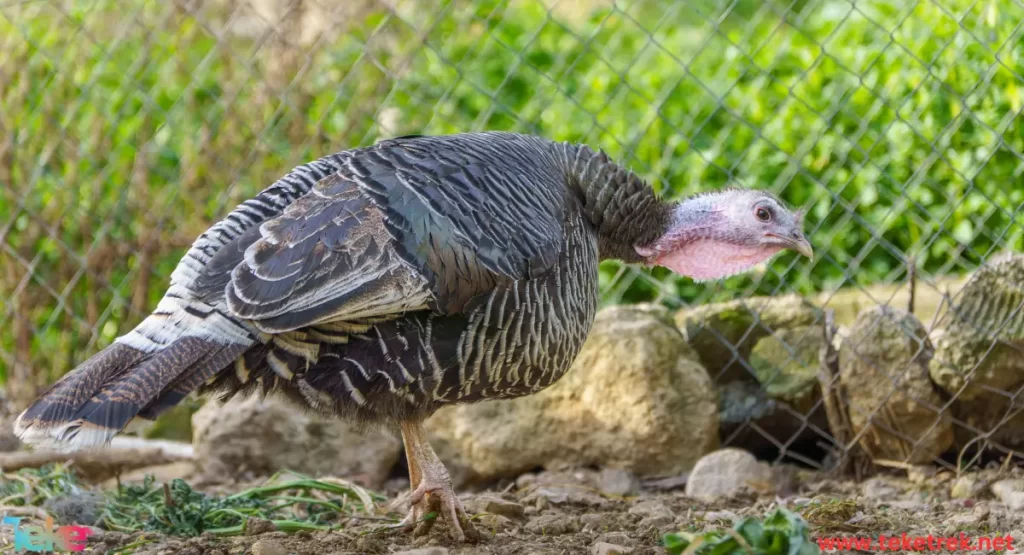
Wild Turkey food
Wild turkeys feed on various wild animals depending on the season. In the warmer months of spring and summer, they primarily consume grains like wheat and corn, as well as small animals like grasshoppers, spiders, worms, and lizards. During the colder months of fall and winter, they rely on small fruits and nuts such as grapes, berries, and walnuts. They continuously search for food during sunrise and sunset hours. Domesticated turkeys, on the other hand, consume commercial feed designed for growth and supplement their diet with grains like corn.
Fascinating Facts About Turkeys
- Thanksgiving Symbol:
In the United States, the turkey is a prominent symbol of Thanksgiving, often consumed as the main dish during this national holiday.
- Lean Protein:
Turkey meat is rich in protein and low in fat, with a high muscle content, making it a healthy choice for various dietary plans.
- Colorful Plumage:
Wild turkeys exhibit a wide range of feather colors, from brown to black, and orange to white, making them beautiful and eye-catching birds.
- Eggs and Recipes:
Besides its famous meat, turkey eggs are delicious and can be used in various tasty recipes, making them an important food source in many cultures.
Wild turkeys have high running speed, reaching up to 25 miles per hour, which allows them to escape danger quickly.
- Behaviors of wild turkeys:
Wild turkeys sleep in trees, spending most of their time on the ground. However, when it’s time to rest, they fly up into the trees. Because they don’t see well at night and to protect themselves from predators, they roost at dusk and fly down at dawn.
Wild turkeys can change their color, allowing their emotions to be discerned through the color of their heads. The colors shift from red to blue to white based on their excitement or calmness. The more intense the colors, the stronger their emotions.
Wild turkeys exhibit personal care behaviors, including dust bathing, sunbathing, and feather maintenance. During dust bathing, they lower themselves onto their bellies or sides, flap their wings, and cover themselves with dirt. This removes accumulated debris from their feathers and also clogs small pores that could harbor parasites like lice and bacteria, while ensuring the removal of loose feathers.
Sunbathing in wild turkeys involves basking in sunlight for both their upper and lower halves. This natural behavior helps filter the oil they produce, which spreads across their feathers and simultaneously dries them from rain showers.
Domestic turkeys cannot fly, whereas wild ones can fly short distances. When faced with immediate danger, wild turkeys can fly up to a quarter of a mile at speeds of up to 55 miles per hour in short bursts.
Turkeys emit a variety of sounds, including “gobbles,” “clucks,” and kee-kees.Their behavior towards humans and pets in residential areas can be aggressive, and habituated wild turkeys may attempt to assert dominance over people or even attack them.
Mating in turkeys
- Male turkeys (toms) possess snoods, fleshy protuberances that hang from the top of their beaks and are specialized for mating. When relaxed, a tom’s snood appears pale and measures 2-3 centimeters. However, during courtship displays, the snood fills with blood, turning redder and extending several centimeters, dangling below the beak.
- According to research in ornithology journals, female turkeys prefer Long-bearded males can also be used to predict the winner in a competition between two males.
- Wild turkeys male do not give parental care. The chicks follow the female for several days to feed them and teach them how to find food. As the chicks grow, they gather in groups consisting of several hens and their young.
- The turkey male is knowed as a “tom” but the female as a “hen”.

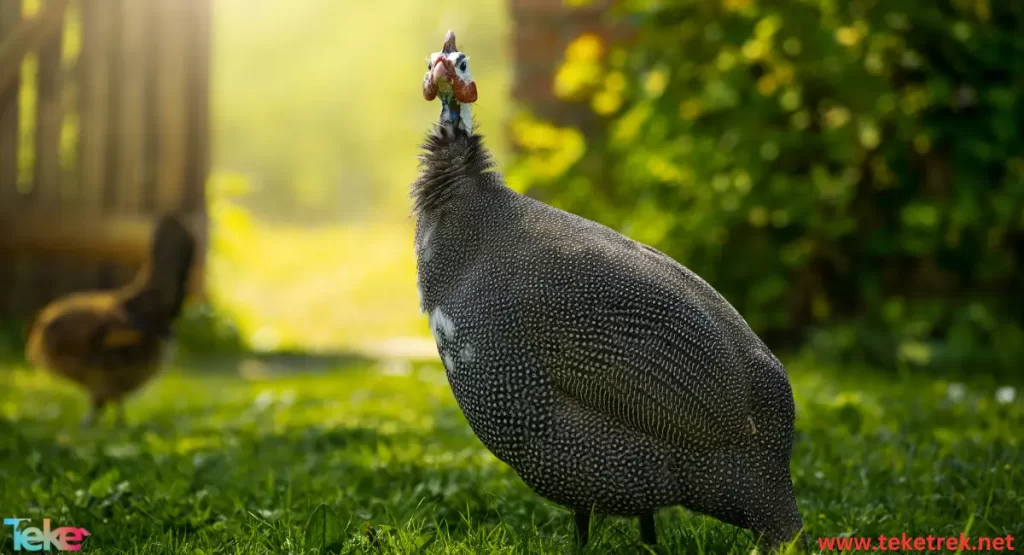
Notable facts about turkeys
- Gender Identification:
The gender of a turkey can be determined by examining their droppings. Turkey male droppings are J-shaped, but female droppings are spiral-shaped.
- Superior Vision:
Turkeys see better than humans, with vision three times sharper. They can perceive colors and have a field of view covering 270 degrees.
- Turkey Consumption:
Many people who avoid red meat turn to turkey. In 2020, per capita turkey consumption reached approximately 16 pounds
- Fossil Record:
Due to their large size, robust bones, and long-standing popularity as a dinner centerpiece, turkeys have a well-documented fossil record compared to most other birds. Fossilized remains of turkeys have been discovered throughout the southern United States and Mexico, some dating back over 5 million years.
The Life Cycle of the Turkey: From Egg to Adulthood
The turkey is a beautiful bird with a life that differs from other birds. Its life cycle includes several stages, from egg to maturity. Here’s an overview of these stages:
Stage One:
This includes two periods—incubation and embryonic development.
The incubation period lasts around 28 days, during which the embryo develops inside the egg and prepares for hatching.
Stage Two:
The chick hatches from the egg and begins to grow rapidly. The chicks are fed with a special feed rich in protein and energy essential for growth.
Stage Three:
Rapid growth occurs during the first few weeks, as the turkey grows at a fast rate.
Stage Four:
Sexual maturity is reached at around 6–8 months of age, at which point the turkey is fully developed and ready for reproduction.
How Does the Environment Affect Turkey Behavior?
The environment plays a significant role in the behavior of turkeys. Several environmental factors influence how turkeys act and interact with their surroundings:
- Temperature affects turkey activity; they are more active in moderate temperatures.
- Humidity makes turkeys more mobile and active in moist environments.
- Lighting has a positive effect on turkey behavior and general well-being.
- Space is crucial—turkeys are naturally curious and enjoy roaming in wide areas.
- Social interaction influences behavior. Turkeys can become more aggressive or shy when around other males. A male turkey prefers solitude without other males in its territory.
- Cleanliness is essential for maintaining the health of turkeys.
The Relationship Between Climate, Habitat, and Turkey Activity
Birds in general are sensitive to temperature changes, and turkeys especially so due to their larger bodies and long feathers. Turkeys prefer living in moderate climates and humid regions. When provided with a suitable climate, they become more active and interact positively with their surroundings. However, they do not tolerate extremely cold weather, so a warm place is necessary during winter.
Turkeys also favor large spaces that allow them to roam freely. Their habitat should be spacious, well-ventilated, and exposed to sunlight to help prevent diseases.
Scientific Comparison: Wild vs. Domestic Turkeys
There are significant differences between wild and domestic turkeys despite sharing the same name. Domestic turkeys are larger in size and have colorful feathers, while wild turkeys are darker brown and more slender. Here’s a scientific comparison:
- Behavior:
- Wild turkeys live in small groups and migrate seasonally. They forage in the wild and avoid human contact.
- Domestic turkeys live in large groups on farms or in coops, feed on prepared feed, and interact with humans. Their life cycle is fully human-managed.
- Wild turkeys live in small groups and migrate seasonally. They forage in the wild and avoid human contact.
- Diet:
- Wild turkeys feed on grasses, fruits, seeds, and insects.
- Domestic turkeys are fed compound feed rich in protein and energy.
- Wild turkeys feed on grasses, fruits, seeds, and insects.
- Physical Structure:
- Wild turkeys have lean bodies and strong wings that allow short-distance flight.
- Domestic turkeys are bulkier with colorful feathers, short wings, and often cannot fly.
- Wild turkeys have lean bodies and strong wings that allow short-distance flight.
- Reproduction:
- Wild turkeys mate in the wild, nesting on the ground. The female lays eggs and incubates them naturally.
- Domestic turkeys are usually bred artificially, with eggs incubated in machines.
- Wild turkeys mate in the wild, nesting on the ground. The female lays eggs and incubates them naturally.
Reproduction System in Turkeys
The reproduction system in turkeys depends on biological and behavioral factors, particularly female choice of mate. Female turkeys select mates based on:
- Appearance: Preference for males with shiny, beautiful feathers and large, fanned tails.
- Behavior: Preference for assertive and dominant males who display strutting and gobbling.
- Health: Healthy and strong males are favored.
After mate selection, copulation occurs. The male transfers sperm to the female’s oviduct, where eggs develop. The female lays about 10–12 eggs per year in a nest. The male guards the nest and provides food for the female during this period.
Rumi language: What Do Their Sounds and Movements Mean?
Turkeys use a variety of sounds and movements to communicate emotions and social intentions:
- Gobbling: A loud, sharp sound to signal danger or threats.
- Chirping: A soft, gentle sound to express happiness or satisfaction.
- Clucking: A repeated, loud sound indicating hunger or thirst.
Movements:
- Strutting: Walking proudly with raised head and tail, a sign of confidence and dominance.
- Bowing: Indicates submission or surrender.
- Flying (short distances): A response to fear or the need to escape.
Body language also reveals their mood—ruffling feathers can indicate excitement or aggression, and wide-open eyes may express fear or alertness.
The Role of Turkeys in Environmental Balance
Turkeys play an important ecological role:
- Pest control: By eating insects, turkeys help reduce agricultural pests, decreasing reliance on chemical pesticides.
- Seed dispersal: Their diet includes seeds and grains, contributing to plant growth regulation and preventing invasive species.
- Nutrient cycling: Feeding on organic matter helps return nutrients to the soil.
- Maintaining food web balance and supporting biodiversity.
Common Diseases Affecting Turkeys and How to Prevent Them
Turkeys can suffer from several diseases, some of which are serious:
- Newcastle Disease: a viral disease that affects the respiratory and nervous systems.
- Avian Influenza: A viral respiratory disease.
- Coccidiosis: A parasitic disease of the intestines.
- Salmonella: A bacterial disease of the digestive system.
- E. coli: Another bacterial digestive disease.
Prevention Measures:
- Vaccination: Vaccinate against diseases like Newcastle and avian flu.
- Sanitation: Keep housing and equipment clean.
- Proper nutrition: Ensure a balanced diet rich in protein, vitamins, and minerals.
- Health care: Regular checkups and immediate treatment when necessary.
- Isolation: Separate sick birds to prevent disease spread.
The Importance of Turkey in Global Cultures Throughout History
Turkey holds significant symbolic and cultural importance in many cultures around the world, being associated with celebrations and traditions, and considered a symbol of harvest and prosperity—especially when served during holidays and festive occasions. In addition, turkey plays an important economic role as a source of meat, particularly during holidays like Thanksgiving and Christian celebrations. It is raised on a large scale worldwide, making it of great economic value. Turkeys have also been linked to myths and folktales in some cultures, further enhancing their symbolic status.
How Does the Color of a Turkey’s Feathers Affect Its Social Behavior?
The turkey’s color feathers —especially its head and neck—affects its social behavior, indicating its attitude toward others. For instance, a red head may signal excitement or aggression, while a blue head suggests calmness and dominance. A white head, particularly when combined with blue, signifies confidence and control. In addition, ruffled feathers can be a sign of excitement or aggression.
The Difference Between Turkey Behavior in the Wild vs. in Captivity
Both wild and domesticated turkeys exhibit several behaviors that differ markedly from each other. In the wild, turkeys are more active and mobile, engaging in natural behaviors like foraging, flying short distances, and gathering in flocks. In captivity, however, turkeys tend to be calmer and less active, often exhibiting behaviors linked to boredom or frustration.
Visual Communication: What Do Turkey Eye Signals Mean?
Turkeys use visual communication to express a wide range of emotions and states, including threat, intimidation, attraction, and curiosity. Examples of turkey eye communication include:
- Threat and Intimidation:
A turkey may stare at another turkey or predator as a sign of threat or intimidation. - Attraction and Interest:
A turkey might gaze intently at a hen or an object of interest as a sign of curiosity or attraction. - Social Communication:
Turkeys use eye contact to coordinate and alert other flock members. - Fear and Vigilance:
A turkey may stare in the direction of a potential threat as a sign of fear or caution. - Expression of Dominance:
A turkey might stare down another turkey in an attempt to assert dominance or control.
How Do Turkeys Choose Nesting Sites?
Wild turkeys build their nests in quiet, secure places, most often on the ground among fallen leaves at the base of trees, under dense bushes, and within piles of tangled branches, or even in open hayfields. Turkeys prefer nests that offer protection from weather elements and predators.
Social Intelligence of Turkeys: Recent Studies
Turkeys are remarkably socially intelligent, showing complex social behaviors and strong emotional bonds, according to animal sanctuaries and research. They form tight-knit groups, recognize flock members by their voices, and even display signs of affection and empathy. Wild turkeys, in particular, navigate complex social structures and demonstrate an ability to remember geographic locations.
Here’s a closer look at their social intelligence:
- Social Structure and Relationships:
- Flocking Behavior: It lives in flocks, organized according to a social hierarchy in which each bird dominates birds of lower status.
- Strong Bonds: It forms close, lasting friendships with each other, and even with humans.
- Recognition: Turkeys can recognize flock members by their unique calls.
- Flocking Behavior: It lives in flocks, organized according to a social hierarchy in which each bird dominates birds of lower status.
- Emotional Depth:
They show affection, such as preening each other, and can express signs of empathy.
Can Turkeys Be Kept as Pets? Tips and Experiences
Turkeys can be kept as pets, but this requires preparation and special care. They are intelligent and social animals, and they can form strong bonds with their owners. However, you should be aware of their specific needs before deciding to raise them as pets.
Key tips for raising turkeys as pets:
- Provide Space:
Turkeys need enough room to move and play, whether indoors or outdoors. - Provide Shelter:
A safe shelter protected from weather and predators is essential. - Balanced Diet:
A diet rich in protein and other essential nutrients is crucial for turkey health. - Socialization:
Opportunities for social interaction with humans and other turkeys are necessary for their well-being. - Health Care:
Regular veterinary care, vaccinations, and check-ups are required. - Patience and Attention:
Turkeys are intelligent and require patience and care to build a strong relationship with them. - Handling Behaviors:
Turkeys may show undesirable behaviors like loud calls or pecking attempts, so they must be handled with patience and understanding.
Dietary Differences Among Turkeys Based on Geographic Environments
The diet of turkeys varies depending on their geographic environment due to differences in available food sources. Wild turkeys, for example, eat a wide variety of foods, such as seeds, berries, insects, worms, and even small frogs and reptiles, allowing them to adapt to different habitats. Domesticated turkeys, on the other hand, rely on specially formulated feed designed to meet their nutritional needs according to their age and production stage.
The most frequently asked questions about turkey
- Is turkey meat healthy?
Turkey meat is useful in completing vital processes in the body. This is because it contains important elements such as iron, zinc, phosphorus, and protein to carry out these vital processes. It helps increase the body’s energy, activity and vitality because it contains niacin and vitamin B.
- Is turkey better or chicken?
Chicken and turkey meat are not only a rich source of protein, but they also contain many other important nutrients. Chicken meat is considered low in fat and rich in vitamins and minerals, while turkey meat is characterized by a high percentage of protein and iron.
- Why is the name turkey called?
Tracing the name alone leads to a vicious circle, especially since his name in Arabic is “Rumi,” in reference to the Roman Empire in southeastern Europe, or “Abyssinian” in some Arab regions.
- How old is a turkey when killed?
Turkey life span ranges between 14 to 18 weeks.
In conclusion, it’s worth noting that Benjamin Franklin preferred the turkey over the bald eagle. In a letter to his daughter, he described it as a “bird of bad moral character” because it steals from other birds. He also characterized it as a “more respectable bird” and “a true original native of America.”

